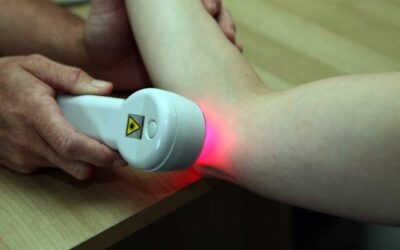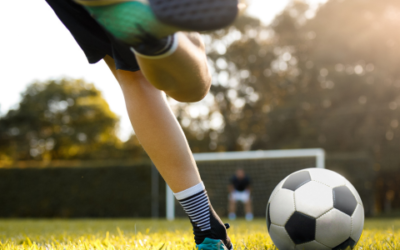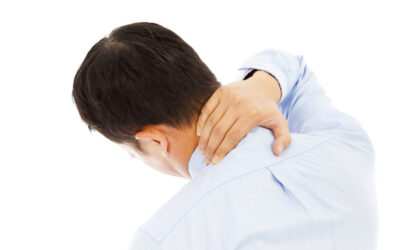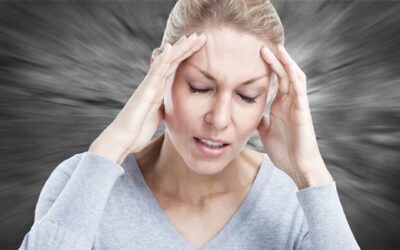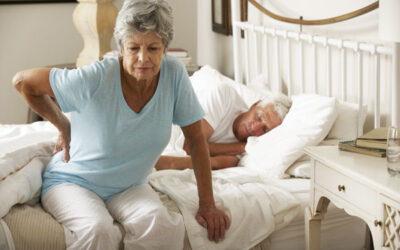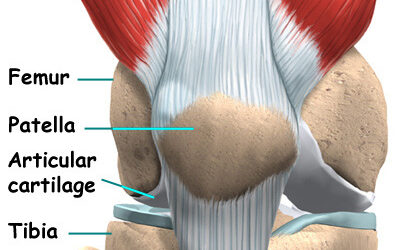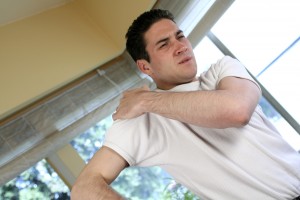Our Blog
Sunday Chiropractor
A chiropractor who works on Sundays offers several unique and practical benefits, especially for people with busy or unconventional schedules. That is why we are open 7 DAYS a week, Monday to Saturday from 5.30am.
Key advantages are :
1. Convenience for Busy Schedules
• Many people work Monday through Friday and have limited time during the week for appointments.
• Sunday availability allows for more flexibility without disrupting work or school.
2. Faster Relief for Acute Issues
• Injuries or pain can occur over the weekend, such as from sports, chores, or accidents.
• Seeing a chiropractor on Sunday can prevent pain from worsening and offer faster relief.
3. Reduced Wait Times
• Sunday appointments may be less crowded than weekday slots, allowing for more personalized attention and shorter wait times.
4. Stress-Free Scheduling
• Weekends often allow for a more relaxed schedule, making it easier to attend an appointment without rushing or juggling other responsibilities.
5. Support for Athletes and Active Individuals
• Weekend warriors—those who are active primarily on weekends—can get immediate care for strains, sprains, or tightness after exercise.
6. Consistency in Care
• Regular treatments are crucial for many chiropractic care plans. Sunday hours help patients stay consistent, especially if they miss a weekday appointment.
7. Emergency or Last-Minute Needs
• Sudden back or neck pain doesn’t wait for weekdays. A Sunday chiropractor can help address urgent issues when other offices are closed.
#sunday chiropractor #weekend chiropractor #7 day chiropractor
“How do i stay pain free while working from home?”
✅ WORKSTATION SETUP (ERGONOMICALLY SOUND)
1. Desk and Chair Setup
Chair: Use an adjustable chair with lumbar support.
Hips slightly higher than knees
Feet flat on the floor (or footrest)
Desk: Elbows should be at a 90° angle when typing.
Screen:
Top of the screen at or slightly below eye level
Monitor 20–30 inches from your face
Use a laptop stand or external monitor if using a laptop
2. Keyboard and Mouse
Keep them close to your body to prevent overreaching.
Use a split or ergonomic keyboard if you have wrist or shoulder issues.
Consider a vertical mouse to reduce wrist strain.
3. Lighting
Use natural light when possible to reduce eye strain.
Position your screen to avoid glare.
💆 CHIROPRACTIC INSIGHTS: BODY MECHANICS & SPINAL HEALTH
1. Posture Awareness
Head in neutral position (not forward)
Shoulders relaxed, not rounded
Spine upright and supported
🔁 Chiropractor tip: Check your posture every 30 minutes using the “Wall Test” (back to the wall: head, shoulder blades, and glutes touching it).
2. Stretch and Move Regularly
Microbreaks every 30–45 minutes
Stand, stretch, walk—even 2–5 minutes helps
Do spinal mobility exercises (e.g., cat-cow, thoracic twists)
3. Core Strength
Weak core = poor support for your spine.
Incorporate daily core strengthening (planks, dead bugs, bird dogs)
4. Chiropractic “At-Home” Techniques
Use a lumbar roll or small towel to support lower back
Foam rolling or gentle spinal decompression (laying with knees elevated)
Use a tennis ball to self-massage tight muscles (glutes, shoulders)
🧠 HABIT & LIFESTYLE ADJUSTMENTS
1. Create Work Zones
Avoid working from couch or bed long-term
Set a dedicated workspace to encourage proper ergonomics
2. Hydration and Diet
Stay hydrated to keep discs and joints healthy
Avoid inflammatory foods (excess sugar, processed food)
3. Use Standing Desks Smartly
Alternate sitting and standing every 30–60 minutes
Use a footrest when standing to shift weight
Avoid locking your knees
🧍♀️ SIMPLE DAILY STRETCH ROUTINE
Neck rolls & chin tucks
Shoulder shrugs and circles
Chest opener stretch (hands behind back)
Seated spinal twist
Hamstring and hip flexor stretches
Plantar fasciitis
Cold laser therapy, also known as low-level laser therapy (LLLT), is a non-invasive treatment that uses specific wavelengths of light to stimulate healing in tissues. For plantar fasciitis, this therapy offers several potential benefits: ✅ Key Benefits of Cold Laser...
Perinueral Injections for Tennis Elbow
Perineural Injection Therapy (PIT), also known as neurofascial prolotherapy, is a treatment aimed at relieving chronic pain by injecting a dextrose (sugar-water) solution near irritated or inflamed nerves. In the case of tennis elbow (lateral epicondylitis), which involves pain and inflammation where the forearm muscles attach to the outer elbow, PIT may offer several potential benefits:
What PIT Might Do for Tennis Elbow:
Reduce Nerve-Related Pain:
PIT targets the small sensory nerves in the superficial tissue. If pain from tennis elbow is partly due to chronic nerve irritation (as it often is), PIT may calm the nerves and reduce pain.
Interrupt Pain Signaling:
The dextrose solution may help “reset” overactive pain receptors in the nerve endings, especially in chronic cases where the pain persists after the initial injury heals.
Support Tissue Healing:
By reducing inflammation around the nerves and improving the local environment, PIT might support healing of the tendon and connective tissues indirectly.
Improve Range of Motion and Function:
With decreased pain, patients often find it easier to move the elbow, grip objects, and return to daily or athletic activities.
How It Compares to Other Treatments:
Unlike cortisone injections, which suppress inflammation but may weaken tendon tissue over time, PIT is generally considered non-destructive.
PIT is less invasive than surgery and may be considered if physical therapy, bracing, or standard prolotherapy haven’t worked.
“Struggling with chronic pain that just won’t go away?
Perineural Injection Therapy (PIT)!”
Perineural injections target small, inflamed nerves under the skin — often a hidden source of persistent pain. Unlike steroid injections, PIT uses a gentle solution (usually dextrose) that helps calm irritated nerves and promotes healing.
✅ Non-invasive
✅ No steroids
✅ Fast relief
✅ Complements chiropractic adjustments perfectly
Whether you’re dealing with old injuries, nerve pain, or inflammatory issues, PIT could be the boost your body needs.
📍 Ask us if PIT is right for your care plan!
#ChiropracticCare #PerineuralInjection #PainRelief #ChronicPain #FunctionalMedicine #NerveHealing
💥 Stress isn’t just in your head—it’s in your spine too.
Chronic stress tightens muscles, misaligns your spine, and impacts your nervous system. That’s where chiropractic care comes in.
✅ Reduce tension
✅ Improve posture
✅ Support your body’s natural balance
Feeling the pressure? Your spine might be too. Come in for an adjustment.
#ChiropracticCare #StressRelief #HolisticHealth
Long Weekend Wellness Tips
Long weekends are for rest, not regret! 😌
Here are 5 tips to keep your spine happy and your body feeling good: ✅ Stretch after road trips
✅ Stay hydrated
✅ Watch your posture (yes, even on the couch!)
✅ Don’t skip movement altogether
✅ Book a post-weekend adjustment 😉
Your back will thank you—trust us!
🌸 Easter School Holidays: Perfect Time for Family Wellness! 🐰
The Easter school holidays are here, and it’s the perfect opportunity to focus on your family’s health and well-being! 🏃♀️🏃♂️ Whether your kids are out playing sports, sitting for hours with their devices, or you’re all traveling for family trips, it’s easy for little bodies to experience discomfort.
👶💆♂️ Did you know? Chiropractic care isn’t just for adults! Kids and teens can benefit from gentle, tailored treatments that support their growing bodies. From improving posture to reducing stress, chiropractic adjustments can help your family feel their best – so everyone can enjoy the holidays to the fullest! 🌟
🔑 Benefits for Children & Families:
✨ Boosts immune function
🏃♂️ Improves posture and alignment
💆♀️ Reduces tension from activities (sports, school, etc.)
🧘♂️ Helps with relaxation and stress relief
This Easter, give your family the gift of wellness! 🌿 Book an appointment today and let us support your little ones and everyone in the family. 😊
📅 Limited slots available – Call us to schedule today! 📞
#EasterHolidays #FamilyWellness #ChiropracticCare #HealthyFamilies #PostureMatters #KidsWellness #StressRelief #ChiropracticForKids
Feeling Stressed After the Cyclone? Chiropractic Care Can Help!
Cyclones bring a lot of emotional and physical strain. If you’re feeling tense, anxious, or experiencing back and neck pain, chiropractic care might be exactly what you need.
✔️ Relieve muscle tension
✔️ Restore spinal alignment
✔️ Reduce stress & anxiety
✔️ Improve your posture & energy levels
Don’t let the aftermath of the cyclone keep you feeling down—book your appointment today and start feeling like yourself again!
#StressRelief #ChiropracticCare #CycloneRecovery #SelfCare #WellnessJourney
🦵 Your Knees Are the Foundation of Movement! 🏃♂️
Your knees take on a lot of pressure throughout the day. Whether you’re standing, walking, or running, they bear the weight of your body. If something’s off with your knees, it can affect your posture, balance, and overall mobility.
Chiropractic care isn’t just for your back—it’s great for knees too! A properly aligned body can help prevent knee pain and enhance your quality of life. 🦵
#ChiropracticCare #KneeHealth #HealthyKnees #MovementMatters #PainRelief #Chiropractor
“Healthy Kids, Happy Spines!”
“Did you know that chiropractic care can help kids stay active, happy, and pain-free? Whether it’s for improving posture, managing growing pains, or supporting overall health, a healthy spine is key to a healthy body! 💪✨ #ChiropracticCare #HealthySpines #KidsHealth”
🌀 Is dizziness getting in the way of your daily life?
🌪️ Feeling dizzy? It might be more than just a momentary sensation! 🌀
Dizziness is a common symptom that many people experience, but it can be caused by a variety of factors, including misalignments in your neck and spine. Chiropractic care can help identify the root cause and offer effective solutions.
🔑 Chiropractic adjustments can help restore balance, alleviate nerve interference, and improve circulation, which may reduce dizziness and vertigo symptoms.
If you’re experiencing dizziness, don’t wait to feel better—book your consultation today! 👩⚕️👨⚕️
#ChiropracticCare #DizzinessRelief #Balance #Vertigo #NeckPain #SpineHealth #HealthyLiving #Chiropractor #WellnessJourney
“Text Neck: The Silent Epidemic”
📱 It’s time to talk about “text neck.”
As we spend more time on our phones, tablets, and computers, we’re putting added stress on our necks. This can lead to discomfort, headaches, and even long-term problems.
Here are 3 quick tips to prevent text neck:
Hold your phone at eye level
Take regular breaks to stretch
Sit with your shoulders back and chin slightly tucked
For those who need more support, chiropractic care can provide lasting relief! 🙌
#TextNeck #NeckHealth #ChiropracticCare #HealthySpine #PostureFix
Kids’ Ear Infections and Chiropractic Care- What You Should Know
👐 How Chiropractic Care Can Help
Chiropractic treatment focuses on the alignment of the spine and overall nervous system function. Here’s how it may benefit children with ear infections:
Improved Eustachian Tube Function
Chiropractors may adjust the spine and neck, which can help improve the drainage of the Eustachian tubes, reducing fluid buildup and alleviating pressure.
Enhanced Immune Function
Regular chiropractic care can support the immune system, helping your child’s body fight off infections more effectively.
Reduced Pain and Discomfort
Gentle adjustments can relieve discomfort associated with ear infections, providing a natural alternative to pain relief.
Holistic Approach
Chiropractic care promotes overall wellness, addressing potential underlying issues that may contribute to recurrent ear infections.
👩⚕️ What to Expect
Consult with a pediatric chiropractor who has experience treating children. They will assess your child’s condition and create a tailored treatment plan.
Take Care of Yourself This Spring with Chiropractic Care
Whether you’re getting back into your fitness routine or tackling spring cleaning around the house, the sudden increase in physical activity can sometimes lead to injuries. Common issues like lower back pain, muscle strains, or joint discomfort can arise from lifting heavy objects, overexertion, or improper body mechanics.
Chiropractors can help by not only treating existing injuries but also providing preventive care. Regular chiropractic visits keep your body in top condition, improving your body’s resilience and reducing the likelihood of injury.
“Struggling with Sleep? Your Spine Might Be the Culprit! 🌙💤”
Did you know that chiropractic care can improve the quality of your sleep? Misalignments in your spine can lead to discomfort, tension, and even nerve interference, making it harder to relax and drift off.
🌀 Chiropractic adjustments help realign your body, ease muscle tension, and restore balance to your nervous system – creating the perfect conditions for a restful night.
Here’s how chiropractic care can help you sleep better:
Reduces pain: Eases chronic discomfort that keeps you tossing and turning.
Relaxes muscles: Loosens tension and stiffness for a more comfortable rest.
Promotes relaxation: Balances your nervous system, reducing stress and anxiety.
Boosts circulation: Improves blood flow for a more rejuvenating sleep.
Feel more refreshed and energized with regular chiropractic adjustments. 🛌✨ Book your appointment today and experience a night of restful, restorative sleep!
Understanding Pelvic Health and Chiropractic Care
🌟 Did you know? The pelvis is a crucial part of our body’s structure, supporting our spine and connecting our upper and lower body. When it’s out of alignment, it can lead to discomfort, mobility issues, and even affect other areas like the lower back and legs. But don’t worry, chiropractic care can help! 🦴✨
🔍 How Chiropractic Treatment Helps:
Alignment Restoration: Chiropractors use gentle adjustments to realign the pelvis, helping to relieve pain and improve function. This can enhance your overall posture and prevent further issues.
Pain Relief: Misalignment in the pelvis can cause discomfort in the lower back, hips, and legs. Chiropractic adjustments can alleviate this pain, improving your quality of life.
Improved Mobility: By correcting pelvic alignment, chiropractic care can help restore your range of motion, making daily activities easier and more comfortable.
Preventative Care: Regular chiropractic visits can help maintain pelvic alignment, preventing future problems and keeping your body in peak condition.
💡 Tip: If you’re experiencing pelvic pain or discomfort, consider consulting a chiropractor. They can assess your alignment and develop a personalized treatment plan to get you back to feeling your best!
Tennis Elbow and How Chiropractic Care Can Help
What is Tennis Elbow?
Tennis elbow, medically known as lateral epicondylitis, is a common condition that causes pain around the outside of the elbow. It’s not limited to tennis players; anyone who performs repetitive arm, elbow, and wrist movements can develop this painful condition.
Causes:
• Repetitive Motion: Activities that involve repeated arm movements, such as tennis, painting, or even typing.
• Overuse: Overusing the muscles and tendons in the forearm can lead to small tears in the tendons that attach to the lateral epicondyle (the bony prominence on the outside of the elbow).
• Age: Most common in adults between the ages of 30 and 50.
Symptoms:
• Pain and Tenderness: Pain is felt on the outside of the elbow and can extend down the forearm.
• Weak Grip: Difficulty in gripping objects.
• Stiffness: Stiffness in the elbow, especially in the morning.
• Burning Sensation: A burning sensation on the outer part of the elbow.
Benefits of Chiropractic Care for Tennis Elbow
• Non-Invasive: Chiropractic care is a non-invasive treatment option that avoids the risks associated with surgery and long-term medication use.
• Holistic Approach: Chiropractic care addresses the whole body, not just the symptoms, promoting overall health and well-being.
• Personalized Treatment: Chiropractors develop personalised treatment plans tailored to the specific needs of each patient.
• Natural Healing: Chiropractic care supports the body’s natural healing processes, encouraging long-term recovery and prevention.
Conclusion
Tennis elbow can significantly impact your daily activities and quality of life. While traditional treatments can provide temporary relief, chiropractic care offers a holistic and effective approach to treating the root causes of the condition. By focusing on natural healing and prevention, chiropractic care can help you get back to doing the things you love, pain-free.
If you’re suffering from tennis elbow, don’t wait! Contact us today to schedule a consultation and discover how chiropractic care can help you achieve lasting relief.
Children and Sports Injuries
Participation in youth sports is not only booming, it’s something children are starting at earlier ages. According to Dynamic Chiropractic – The Chiropractic News Source, almost 75 percent of families with children between the ages of 5 and 18 have at least one child who plays organised sports, either at school or on a community team. This provides many benefits – learning to work together as a team, boosting confidence, building camaraderie, and consistent physical activity. Correspondingly, as participation increases, injuries increase.
Did you know that almost 40% of all children, teenager and adolescent injuries are sports-related? Injuries in the young athlete are often trivialised. They are usually asked or encouraged to “toughen up and play through the pain.” This approach is not in the young athlete’s best interest for the following reasons:
• It often leads to delayed healing and return to sports.
• It can turn an easily treatable injury into one that becomes difficult to treat.
• In some cases, it can result in a permanent injury that precludes sports participation.
A child has many physical stresses to deal with during their growing years, and problems in children’s spines can occur at almost any point in their development and growth. Factors that will affect the likelihood of a child sustaining an injury are:
• Physical makeup of the child. The natural strength of our ligaments, soft tissues and spine varies from person to person. Other factors such as body weight, posture and even hormonal factors can have an influence.
• In contact sports, the physical maturity of the child compared to their opponents.
• Degree of supervision.
• Use of protective equipment.
• The amount of adequate warm-up.
• The amount of sport played.
Children will benefit greatly from regular spinal and extremity examinations and screenings. Instead of waiting for a painful injury to create a state of pain and instability, young athletes should practice early intervention strategies, introduced to them by their Chiropractor.
Whether providing prevention education, structural adjustments or recommending ways to prevent future injury, Chiropractors have an important role to play with children who are young athletes.
Tailbone Pain
Tailbone pain happens when there is an injury in the coccyx. This pain is also called coccyx pain. The tailbone or coccyx is located at the bottom part of the spinal column. It protrudes the most when you are sitting down.
Falling is the most common way to sustain an injury to your tailbone. Many people will fall on their buttocks and feel an immediate and sharp pain in their tailbone that goes away after a time. But if you land directly on your tailbone, such as when you slip and fall on the stairs, it can cause a tailbone injury since the impact is directly on the tailbone.
Falls aren’t the only thing that can cause a tailbone injury. Sitting for long periods of time on hard pieces of furniture can cause pain and that type of tailbone pain can impact even those who are active otherwise. It can also be referred pain from the sacroiliac joints, pelvic muscles and the lower back. Women are more prone to coccyx pain after giving birth. If you are experiencing this type of pain, chiropractic may be able to help.
When you injure your tailbone, the muscles surrounding it will become stiff. Swelling can occur and the coccyx may end up pulling away from where it should be, causing the nerves in the area to become irritated. You can experience inflammation that can cause even more pain and discomfort.
The Chiropractor will conduct a thorough musculoskeletal assessment to determine the cause of your Tailbone pain.
Whiplash
Whiplash for many can occur when involved in a car accident or by any number of knocks, falls or slips and sports injuries, and can be excruciatingly painful. Many people are shocked to realise that even mild cases of whiplash can happen just by simply turning your head too fast in one direction, being knocked down, falling or even being jostled around while riding a roller coaster or other type of fast moving ride.
In a rear end collision the neck is thrown into extension. What this means is that the person is forced backwards into the car seat as the vehicle is thrust forward. This force is what causes the most damage to the soft tissue area of the neck.
After the head comes into contact with the head restraint of the car it rebounds forward forcing the neck into flexion. As the seatbelt tightens the head is inadvertently thrown forward until the chin hits the chest.
When this movement occurs many things happen in the body at once.
• The muscles and ligaments that support the spine can be stretched or torn
• The discs can bulge, tear or rupture if the damage is severe enough
• Vertebrae can lose their normal range of motion
• The spinal cord and nerve roots can become stretched and irritated.
This action of the head can lead to debilitating pain, including neck stiffness, headaches, blurred vision, nausea, vertigo or numbness and tingling. Symptoms in acute whiplash may not appear at their peak until after the body has coped with the shock of the accident, and pain sets in.
You should be examined as soon as possible after a whiplash accident, even if the symptoms do not seem too severe. This is because it can take days or weeks for symptoms to properly develop. Identifying and addressing problems early will limit pain and recovery time.
Acute Low Back Pain
The lower back is the area of the spine between the bottom of the ribs and the pelvis. There are five movable lumbar vertebrae with discs in between them. They are supported by strong surrounding muscles and ligaments with spinal nerves existing between each of the vertebrae. The pelvis articulates with the spine and provides additional stability and support for the spine. All of these structures combine to make your body into a strong but flexible structure, allowing you mobility while protecting the spinal cord and nerves.
Low back pain is a very common problem – statistics show that 8 out of 10 Australians suffer from back pain at some time. It can be so painful that becomes extremely debilitating. Back pain is one of the most common reasons patients come to Chiropractors for help.
Research has found that chiropractic care has the following benefits, compared to conventional treatment options:
• Decrease in pain relief medication use
• Faster recovery times
• Significant improvement in back pain symptoms
• Significant improvement in physical activity tolerance
Chiropractors have found that patients who have had multiple episodes of acute low back pain find that over time these episodes can get more frequent, last longer and sometimes the pain will never completely be gone. Chiropractors believe that it is important to have a quality treatment program that addresses the movement of the spine to restore normal muscle control and function and try to prevent further episodes of acute low back pain.
Headaches & Migraines
Headaches affect just about everyone at some point and they can present themselves in many different ways. The types of headaches Chiropractors see are; Tension, Jaw (TMJ), Cervicogenic headaches (originating in the neck) followed by Migraine headaches.
Tension Headache Usually present as a generalised headache characterised as a dull tightness around the scalp. Tension headaches can affect concentration, mood and can cause nausea. The Jaw (TMJ) can also be involved which can be caused by clenching or grinding because of stress, jaw injury or misalignment.
Cervicogenic Headache Typically one-sided intense non-throbbing headache that can cause nausea and vomiting if severe enough. It can feel like the pain is behind one eye ball. No visual disturbance or neurological signs. Usually involves pain and discomfort in the upper neck.
Migraine Headache Usually an intense headache on one side that can involve nausea, vomiting and visual disturbances. Some migraines begin with visual disturbance like partial blind spots or squiggly lines in the visual field with the headache beginning after about 20 minutes. It has a throbbing pulsating nature. Due to its severity and the other symptoms the migraine patient cannot function and is usually bedridden.
Treatment
Your Chiropractor will perform a thorough neuro-musculoskeletal assessment of the neck and upper back, including: movement, posture, palpation, functional testing, strength testing and specific pain provocation tests to identify where exactly the headaches may be coming from and what is possibly causing them.
Avoid Common Christmas Injuries
With the festive party season in full swing and holidays just around the corner, Chiropractors are urging everyone to take extra caution, to stay safe, injury-free and happy this Christmas. The best Christmas present you can yourself and family is; Your Health.
As much as we love this holiday and celebration period, it can sometimes take its toll on our body and mind and therefore also on our spine and nervous system. Whether it is overindulging in a bit too much Christmas pudding or wine, or lugging heavy Christmas presents around the shopping centre whilst stressing if you have everything organised in time for Christmas Day, or it’s a musculoskeletal injury from an intense run along the beach after months of inactivity, or low back pain from driving for long distances or lying poorly on the couch watching the Boxing Day Test, it can be a stressful time on the body and spine in many ways.
In order to enjoy a healthy and injury-free holiday, your Chiropractor is encouraging you to focus on your health, both physically and mentally.
Facet Joint Syndrome
Facet Joint Syndrome, also called facet joint sprain is a common cause of back pain. The facet joints, also termed zygapophyseal joints, are located at the back of the spine. There are two joints at each level, one on either side of the spine.
The facet joints are classified as synovial joints and are enclosed within a joint capsule. There is synovial fluid within the capsule and the joint surfaces are covered with hyaline cartilage. The role of the facet joints is to control excessive movement especially in rotation and extension, and therefore provide stability for the spine.
Injuries to the facet joints can have many causes, but essentially it is a sprain and as such, it is caused by excessive movement causing damage to the joint capsule, which in turn cause swelling, inflammation and pain. The pain in turn causes a reactive muscle spasm, which is a protective mechanism. The result is a sudden severe pain and inability to move comfortably.
Most injuries are caused by what is called recurrent micro-trauma, it means many small repetitive injuries, until the proverbial ‘last straw’. That is why people often hurt themselves doing very trivial things such as bending to pick up a pen, and they hurt themselves before they even get to lift the pen.
The initial treatment involves avoiding the movements that cause the joints to be painful, but prolonged rest is not advisable. Once the diagnosis is made the appropriate treatment can be given.
Referred Pain
Chiropractors are routinely asked ‘What is referred pain?’
You might be experiencing what you assume are minor aches and pains. These could occur anywhere in multiple forms, from tingling pain down the arms or legs to soreness in the hips. Often, the source of these pains is the spine, even when the pain is elsewhere. Referred pain is a real, common condition that can affect any part of the body. Referred pain is also a serious condition, since it might not be getting the proper attention.
Don’t ignore seemingly random pain and just hope it goes away on its own. Instead, seek help from someone who understands exactly how referred pain works and what causes it, a chiropractor.
Knee Pain
Chiropractic for knee pain includes a thorough examination of the muscles, ligaments, joints, posture and gait, as well as discussing past injuries and lifestyle habits that may be contributing to your condition.
A Chiropractor will address the issues in and around the knee from the pain, but will also investigate if other alignment issues in other areas of the body may actually be the true cause of the knee pain, or at least contributing to it. For example, limited range of motion in the hips or tightness in the lower back can place excessive strain on the knees which can be painful. With the right chiropractic care, issues such as these can be corrected so you can live pain-free.
Common Running Injuries and Chiropractic
According to research, 82 percent of runners will experience some form of injury throughout their running career. It doesn’t matter if you are an elite athlete training for a marathon or simply starting out on training for your first 5km event. Although running can be extremely beneficial; running can lead to injury.
Cycling Injuries & Chiropractic
Whatever injury you may be suffering as a result of cycling make sure you seek advice from your Chiropractor – who is not only able to assess and address the key factors that can be causing your injury & treat the underlying cause of your problem but as well asses your spinal alignment & function to better assist you in your recovery, & possibly improve your riding performance also. Of course, ensure your bike is appropriately fitted as well.
Numbness and Tingling
Numbness and tingling conditions are conditions that can affect people of all ages. Frequently, numbness or tingling may result from underlying nerve compression of the nerve roots as they exit the spine caused by spinal misalignments – what we as Chiropractors call subluxations. Other causes of numbness and tingling are a ‘pinched’ nerve in other parts of the body or if blood flow is restricted to the affected area for a variety of medical reasons.
Open Hours
Monday: 5.30AM - 5PM
Tuesday: 5.30AM - 5PM
Wednesday: 5.30AM - 12 NOON
Thursday: 5.30AM - 5PM
Friday: 5.30AM - 12 NOON
Saturday: 5.30AM - 10.30AM
Sunday: By Appointment
(Hours may vary, please contact our office)
Follow
Get in Touch
This site is protected by reCAPTCHA and the Google Privacy Policy and Terms of Service apply




















